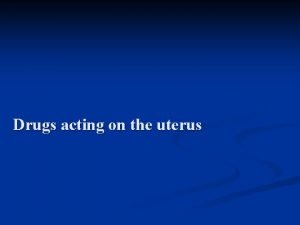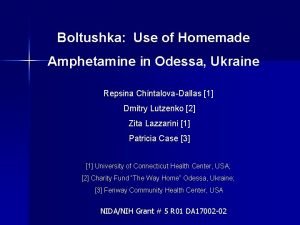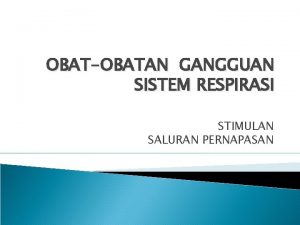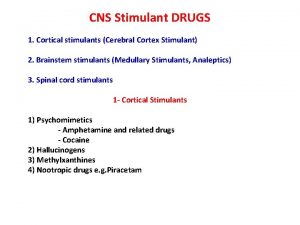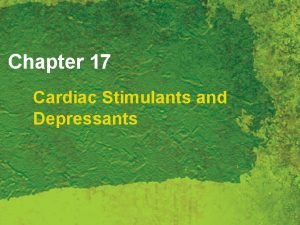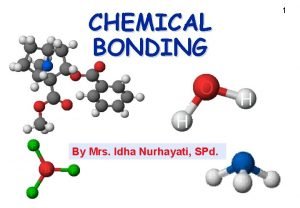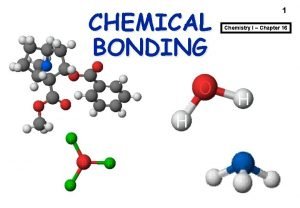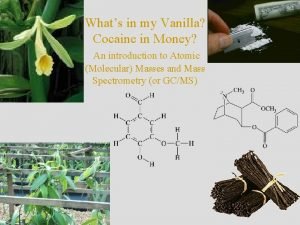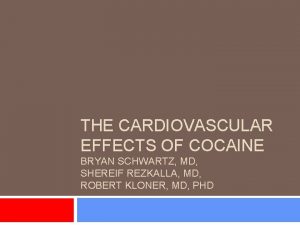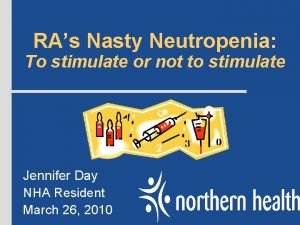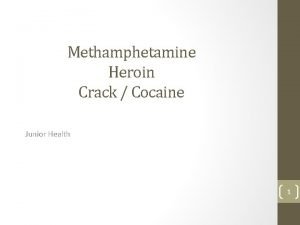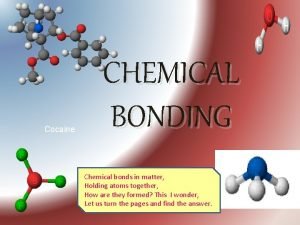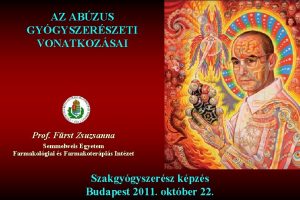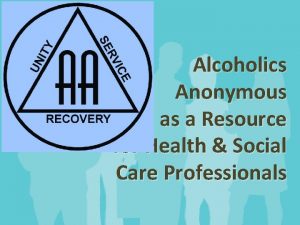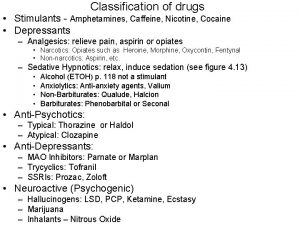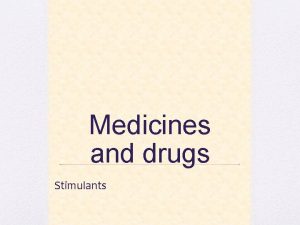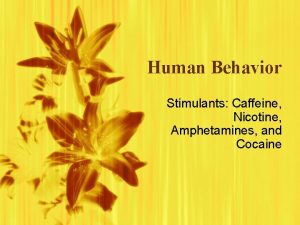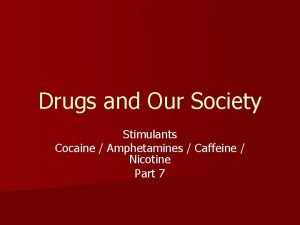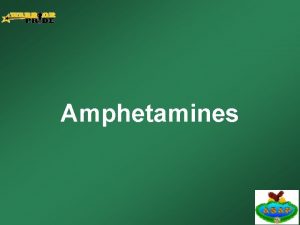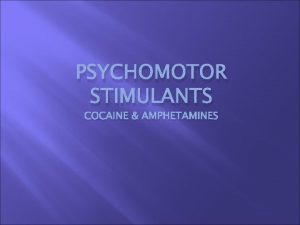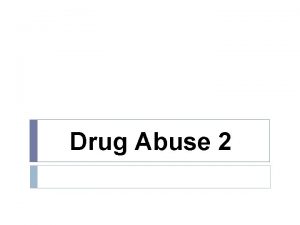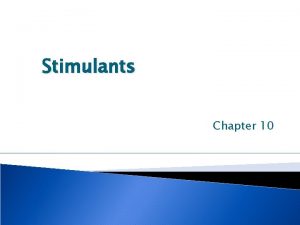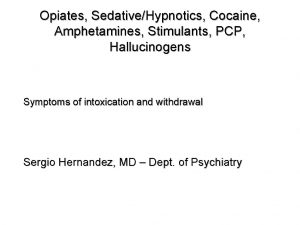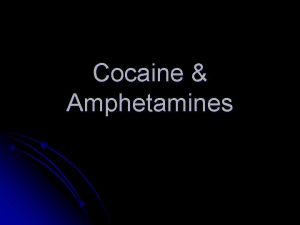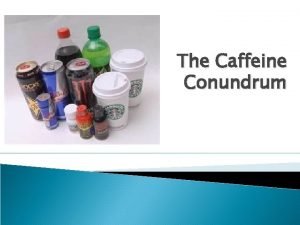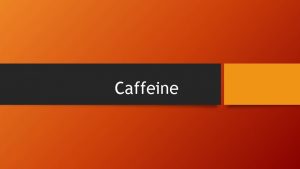Classification of drugs Stimulants Amphetamines Caffeine Nicotine Cocaine














- Slides: 14

Classification of drugs • Stimulants - Amphetamines, Caffeine, Nicotine, Cocaine • Depressants – Analgesics: relieve pain, aspirin or opiates • Narcotics: Opiates such as Heroine, Morphine, Oxycontin, Fentynal • Non-narcotics: Aspirin, etc. – Sedative Hypnotics: relax, induce sedation (see figure 4. 13) • • Alcohol (ETOH) p. 118 not a stimulant Anxiolytics: Anti-anxiety agents, Valium Non-Barbiturates: Qualude, Halcion Barbiturates: Phenobarbital or Seconal • Anti-Psychotics: – Typical: Thorazine or Haldol – Atypical: Clozapine • Anti-Depressants: – MAO Inhibitors: Parnate or Marplan – Trycyclics: Tofranil – SSRIs: Prozac, Zoloft • Neuroactive (Psychogenic) – Hallucinogens: LSD, PCP, Ketamine, Ecstasy – Marijuana – Inhalants – Nitrous Oxide

The GABAA Receptor Has Many Different Binding Sites

Drug Effects • Amphetamine and methamphetamine: release of dopamine, norepinephrine and epinephrine even in the absence of action potentials • Cocaine: increased levels of dopamine because cocaine binds to reuptake mechanism on presynaptic terminal • MDMA (Ecstasy): increases in serotonin levels • Opiates: such as hydrocodone (e. g. , Vicodin), oxycodone (Oxy. Contin, Percocet), bind to opioid receptors Delta (δ), Kappa (κ), Mu (μ) • Marijuana or cannabis: cannabinoids Δ 9 -tetrahydrocannabinol (THC), cannabidiol (CBD) bind to Cannabinoid receptors CB 1, CB 2 • Diazepam (Valium): binds to GABA receptors as an agonist • SSRI fluoxetine (Prozac): blocks reuptake of serotonin • Nicotine: Agonist at the nicotinic acetylcholine receptor

Table 4. 4 Possible Clinical Applications for Hallucinogens Do not need to know this table

Addictive Drugs • Characteristics of Addictive drugs – voluntarily self administered – enhance (directly or indirectly) dopaminergic synaptic function in the nucleus accumbens (NAC) – stimulate the functioning of brain reward circuitry (producing the “high” that drug users seek – functionally these circuits are involved in • • regulation of hedonic “pleasurable” quality encoding attention reward expectancy incentive motivation

Short-term VS Long-term Effects of Drugs • Short term, acute effects – Immediate action of drug binding to receptors – Cocaine increases dopamine levels which produces stimulation • Long term, such as drug tolerance, addiction – Neurons change because of drug exposure • neuroplasticity to drug and its effects – at dendrites, pre & post synapse, receptors – changes to anatomy and chemistry • neurotoxicity: damage to neurons

Reward Pathway • Ventra Tegmental Area (VTA) to Nucleus Accumbens (NA) – Release of Dopamine at NA • VTA circuits – Are inhibited by GABA via local circuits – Get input from hypothalamus, frontal cortex • NA circuits – Excited by Dopamine, Glutamate, Opiates – Input from limbic system and frontal cortex • Role of mesolimbic dopamine (DA) systems to reward could be from – Liking: the hedonic impact of reward – Learning: learned predictions about rewarding effects – Wanting: • the pursuit of rewards by attributing incentive salience to reward-related stimuli • supported by a majority of the evidence

A Neural Pathway Implicated in Drug Abuse

Do not need to know the neuroanatomy Figure 1: VTA–NAc reward circuit. The brain reward circuitry in mood disorders Scott J. Russo & Eric J. Nestler Nature Reviews Neuroscience 14, 609– 625 (2013) doi: 10. 1038/nrn 3381

Neurobiology of addiction: a neurocircuitry analysis • Drug addiction changes motivational circuits in three stages – binge/intoxication stage: exaggerated incentive salience and habit formation • rewarding effects of drugs of abuse produce drug-seeking – withdrawal/negative affect stage: reward deficits and stress surfeits • increased negative emotional states such as dysphoria • decreases in the function of the dopamine component of the reward system – preoccupation/anticipation stage: craving and deficits in executive function • dysregulation circuits from the prefrontal cortex to the basal ganglia

Figure 1: Model of interacting circuits in which disruptions contribute to compulsive-like behaviours underlying drug addiction Do not need to know the neuroanatomy reward craving, impulsivity

The Addicted Brain • Drugs of abuse increase activity of the reward system • Chronic drug use – – Structural and biochemical changes Decreased pleasure Increased craving Can last for years • Changes to reward pathway – Structural • Dendritic spines • Size of synapses • Receptor density – Molecular Biology (second messenger systems) • CREB • Delta Fos B

Mediators of drug addiction • Experience with addictive drugs such as opiates (morphine, heroin, fentanyl) does not result in addiction in all individuals. – However repeated use increases the addictive potential – Approximately 30 % with opiate drugs • Individual difference – Genetics – Past experiences • • Drugs Stressors Poor coping Lack of social support

Other Addictions? • • Food addiction Sex addiction Gambling addiction Running addiction TV addiction Cell Phone addiction Internet Addiction Addicted To Love
 Uterine stimulants definition
Uterine stimulants definition Homemade amphetamine
Homemade amphetamine Respiratory stimulants
Respiratory stimulants Piracetam mode of action
Piracetam mode of action Cardiac stimulants and depressants
Cardiac stimulants and depressants Ch3f polar or nonpolar
Ch3f polar or nonpolar Cocaine lewis dot structure
Cocaine lewis dot structure Cocaine lewis dot structure
Cocaine lewis dot structure Vanilla cocaine
Vanilla cocaine Effects of cocaine
Effects of cocaine Cocaine and levamisole
Cocaine and levamisole Cocaine
Cocaine Is cocaine ionic or covalent
Is cocaine ionic or covalent Vásárlás synthetic cocaine
Vásárlás synthetic cocaine Cocaine anonymous preamble
Cocaine anonymous preamble
